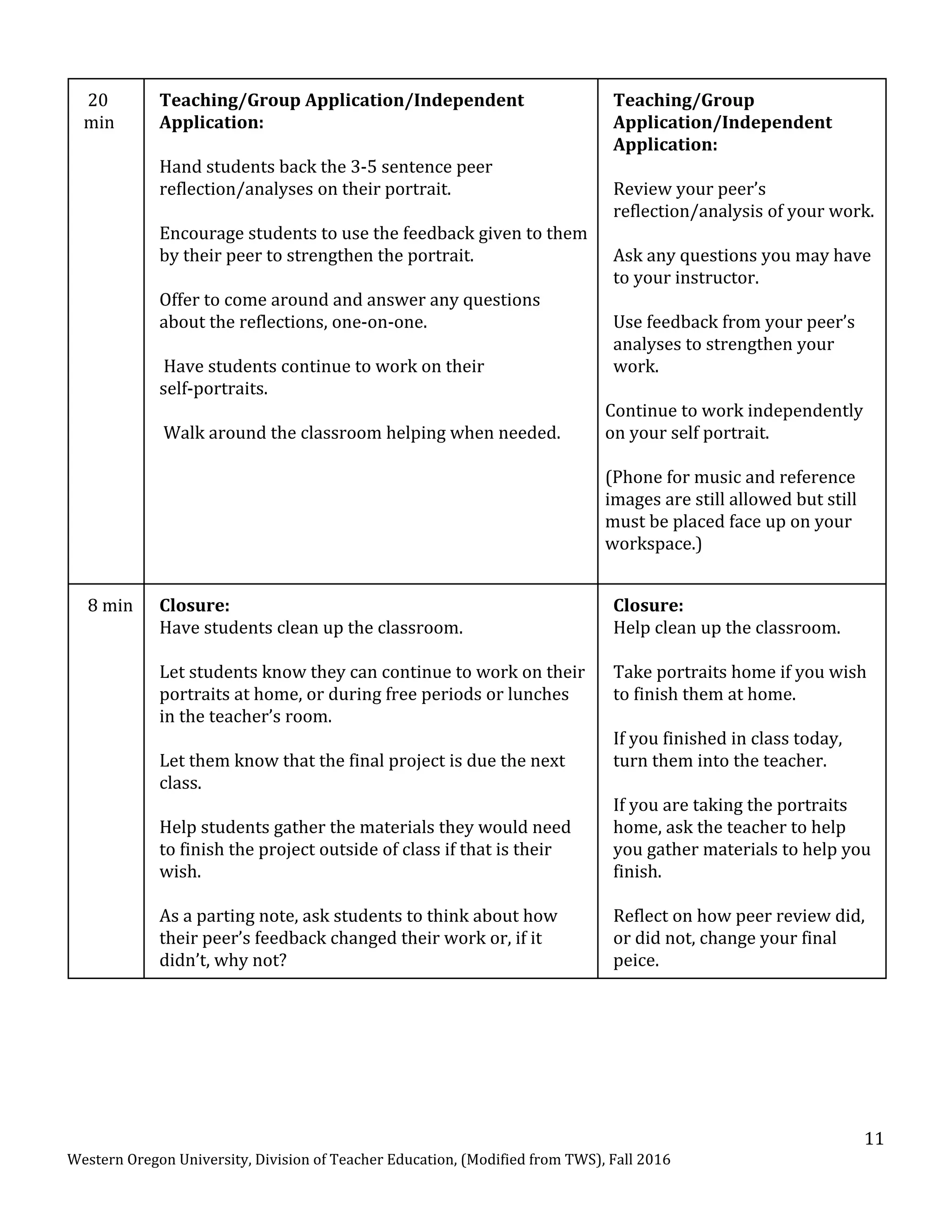This lesson plan introduces students to symbolism in famous artists' self-portraits. Students will first categorize symbols by theme in groups. Then, the teacher will present examples of symbolic self-portraits by artists like Frida Kahlo and Rene Magritte. To assess learning, students will play a Kahoot quiz matching portrait fragments to their artists based on style and symbolic clues. The goal is for students to thoughtfully use symbolism and analyze works based on symbolic choices.











